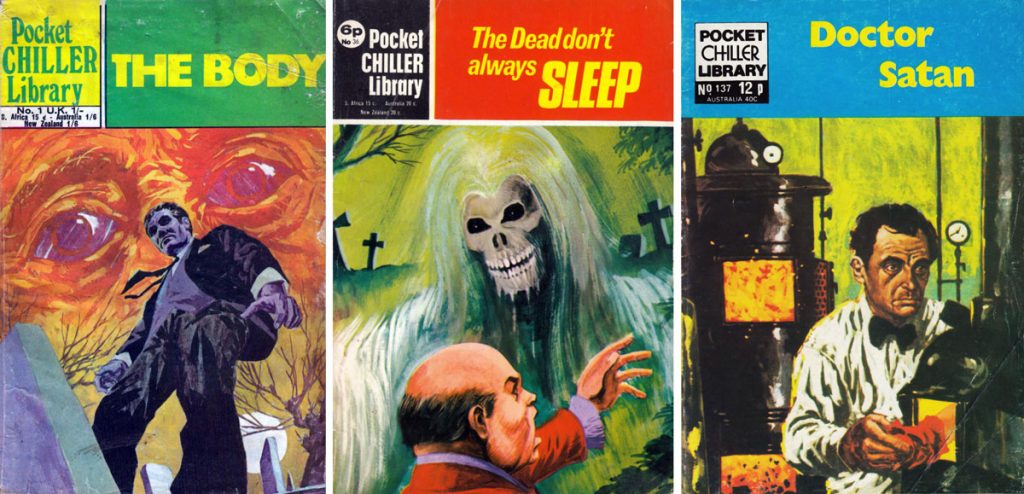
Thorpe & Porter and Top Sellers were both imprints of publisher Williams. Between 1971 and 1977, Top Sellers published Pocket Chiller Library, running to 137 issues, but there are plenty of questions circulating online about the title’s origins and exactly what it featured – reprint European strips or commissioned material from British creators?
I decided to ask several of those noted as working on the title. In particular, it was Dez Skinn, who worked on the series, as he outlines here on his official web site, who kindly provided some background.
“There was a charming rogue named Lee Moncho,” Dez recalls, a longtime editor and publisher who many downthetubes readers will recognise as the man who re-shaped Marvel UK and was later the editor of WARRIOR. “Spain seems to have produced quite a few of such in the comics biz.
“Already having several print connections, he acquired multiple sets of artwork for picture libraries, war, detective, horror, etc.
“Combining these with his print contacts, he offered finished monthly products to several publishers across the 1960s and 1970s. I ended up ‘editing’ one such line, for the aforementioned Top Sellers/Thorpe & Porter/General Books.
“Like Funny Half Hour which was also under my auspices, each was a finished package so I’d nothing to do really, although I did run a set of taglines (an idea nicked from early 1960s Marvels) and a back cover ad, promoting Monster Mag and House of Hammer magazine.”
Dez would have further dealings with Lee Moncho when he set up Quality Periodicals, detailed here.
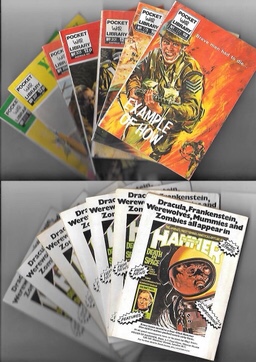
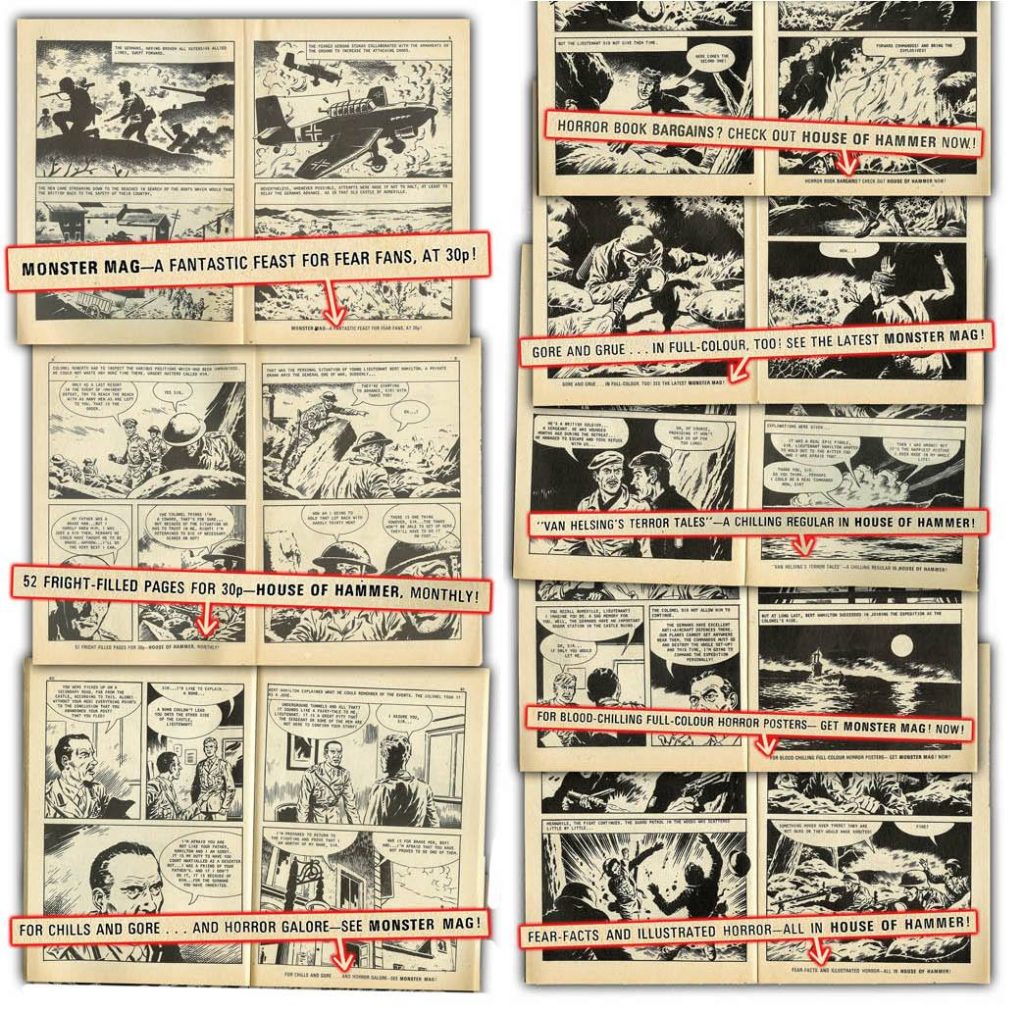
Issues 1 and 2 of Pocket Chiller Library were published by Alex White & Co Ltd, based in James Street, London. From Issue Three, the publisher was Top Sellers, but downthetubes contributor Colin Noble notes that towards the end of the run, the company was either sold or given to Wells Gardner, Darton & Co publishers, in lieu of unpaid debt, as a number of their Pocket War Library were reprinted as Micron Combat Picture Libraries. He also notes that at least three of the stories are based on true crimes.
While many of the early stories were created for the title, some were reprints of stories that were first published in the titles Nightmare Suspense Library and Tales of Terror Picture Library.
As is commonly known, the Pocket Chiller Library comics were pretty dark and not really aimed at children but the issues between 79 and 85, which have never been reprinted, feature perhaps the most extreme imagery in the series. Two especially, Number 81, “Execution of Sinners” and Number 85, “When Cats Purr?”, went as far as including both female nudity and some particularly violent scenes.
Did the artists on these issues go further than they perhaps should have? Issue 85 was the last unique issue, and the artist for Number 85 went as further than others, perhaps a las bow before the series went fully reprint.
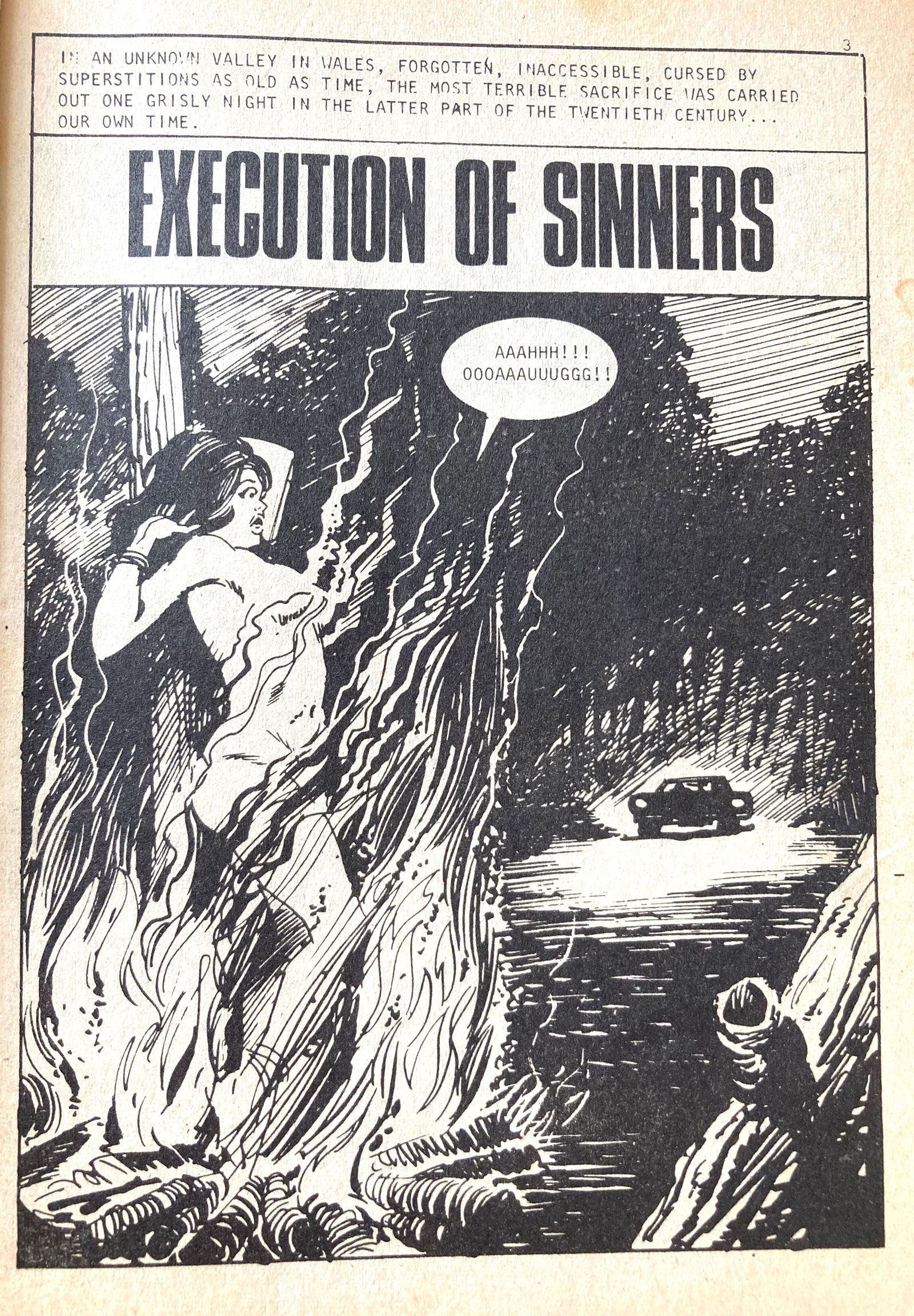
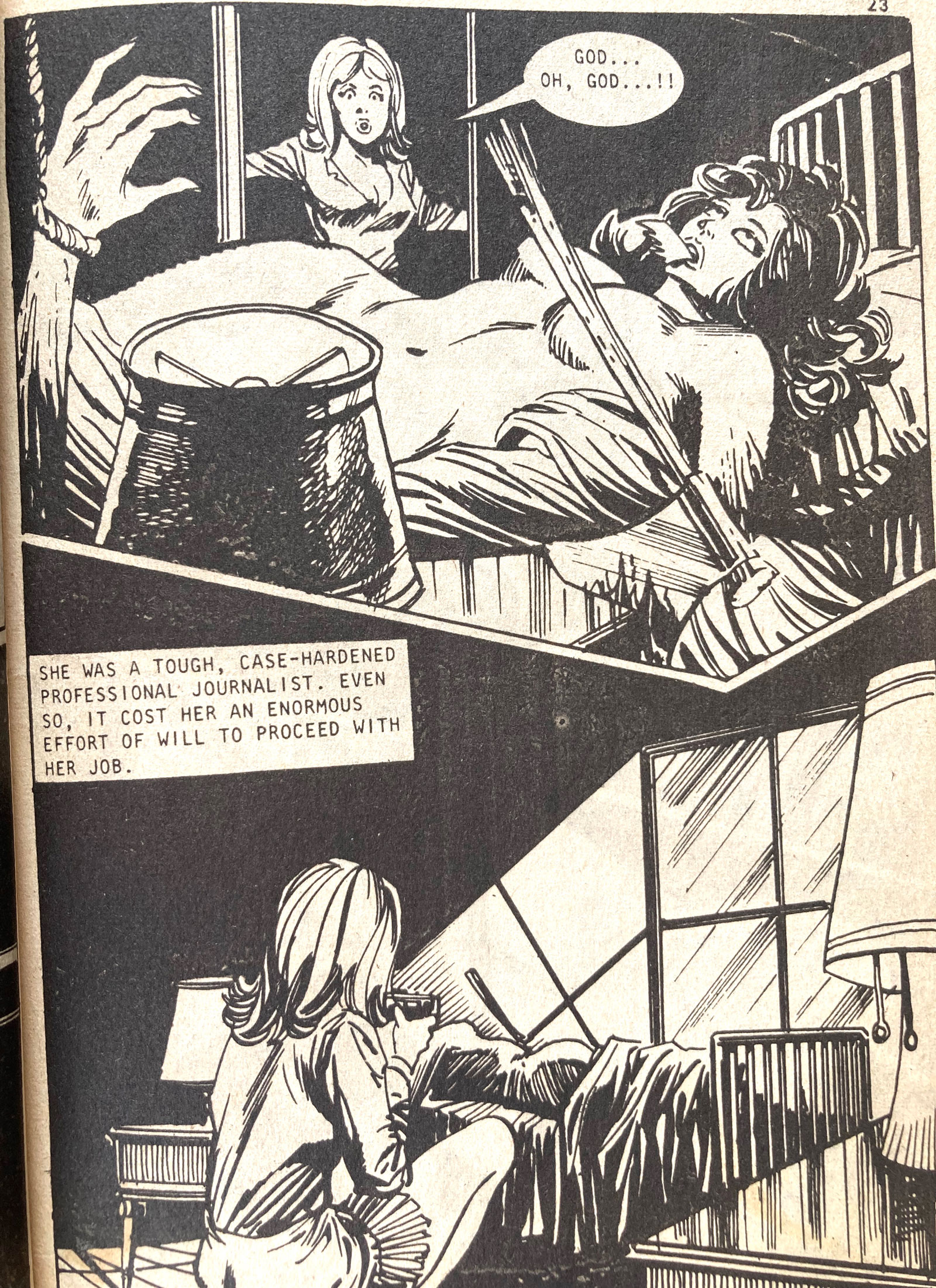
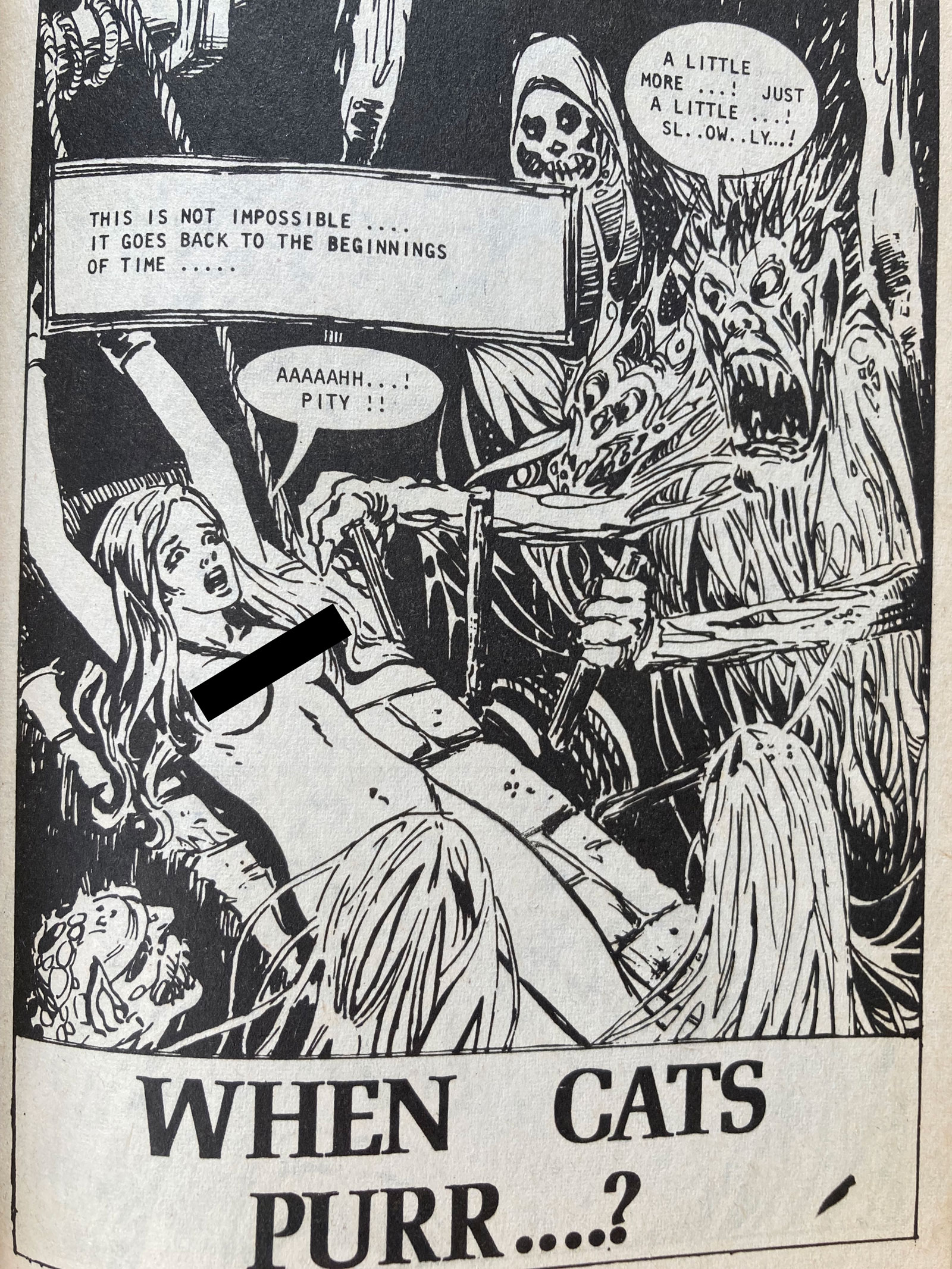

From Issue 86, onwards, the entire remaining run of issues were reprints, so all issues after that are duplicates, some with different covers, and different titles, but the same internal stories. Some of these are also reprints of comics from the two earlier series, Nightmare Suspense Library and Tales of Terror Picture Library – which leads to the situation of one story (“Waxworks/ “Terror in Wax”) actually being published three times. The story titles were often changed.
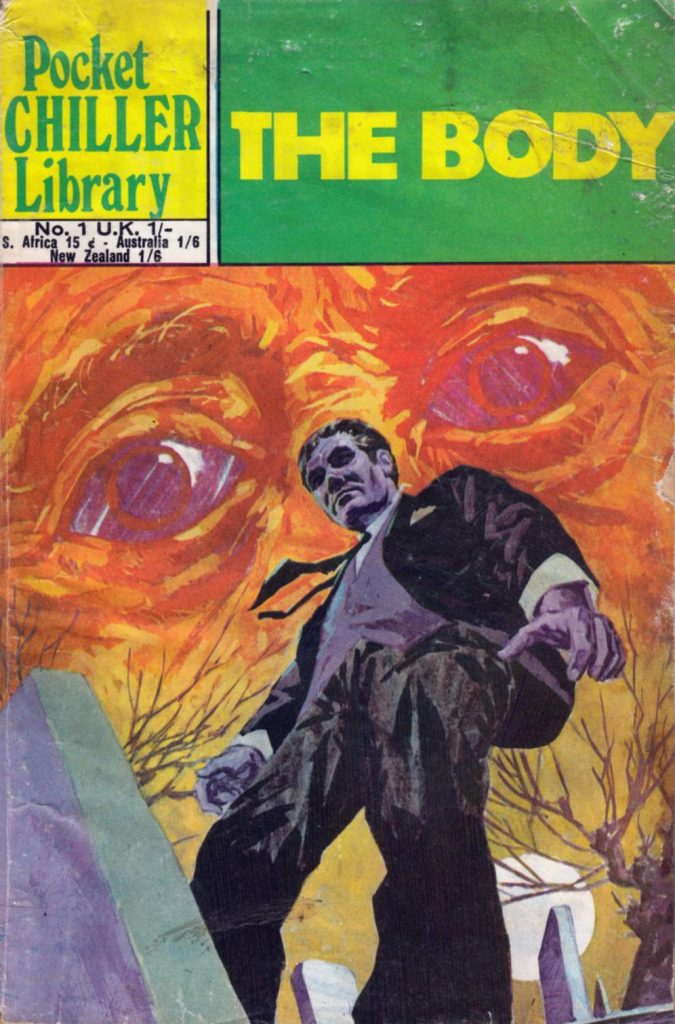
Pocket Chiller Library appears to have reprinted Italian material in some issues, which would fit with Williams pan-European publishing operation and deal with Lee Moncho, and the title was, according to a past discussion on ComicsUK, initially printed initially in Italy for the first 26 issues, then in Spain.
Collector Jon Smit notes a couple of the Chiller stories were previously published before in the short-lived title Nightmare Suspense Picture Library, published by MV Features between 1966 and 1967, which ran for just 16 issues. Pocket Chiller Library Issue 23 “Followers of Satan” originally debuted as Nightmare Suspense Picture Library Issue 7, “The Devil’s Disciple”, utilising the same cover art.
David Roach notes the artists commissioned to create new work were typically Spanish, “people like Borrell and Nieto wth some covers by Fernando Fernandez.
“While there is definitely some new British material – including covers by Allan Willow, the bulk of the art is Spanish reprints. I’ve never linked any of these numerous reprints to a specific Spanish source, but I’d guess it was likely to be a minor publisher like Toray. The search goes on!”
Steve Holland notes that Badia Romero also drew some issues, and wonders if UK-based art agent Barry Coker was agenting these directly to Top Sellers or to Euredit in Spain.
UK commissioned material includes art by 2000AD “Ballad of Halo Jones” artist Ian Gibson drawing “The Rope” (Issue 56), “The Bat” (Issue 60) and “The Kolby Curse” (issue 72).
Dave Gibbons has confirmed he drew #43, “The Dead Are Awake And Walking” – and that this was his first paid comics commission. “It’s awful,” he cautions!
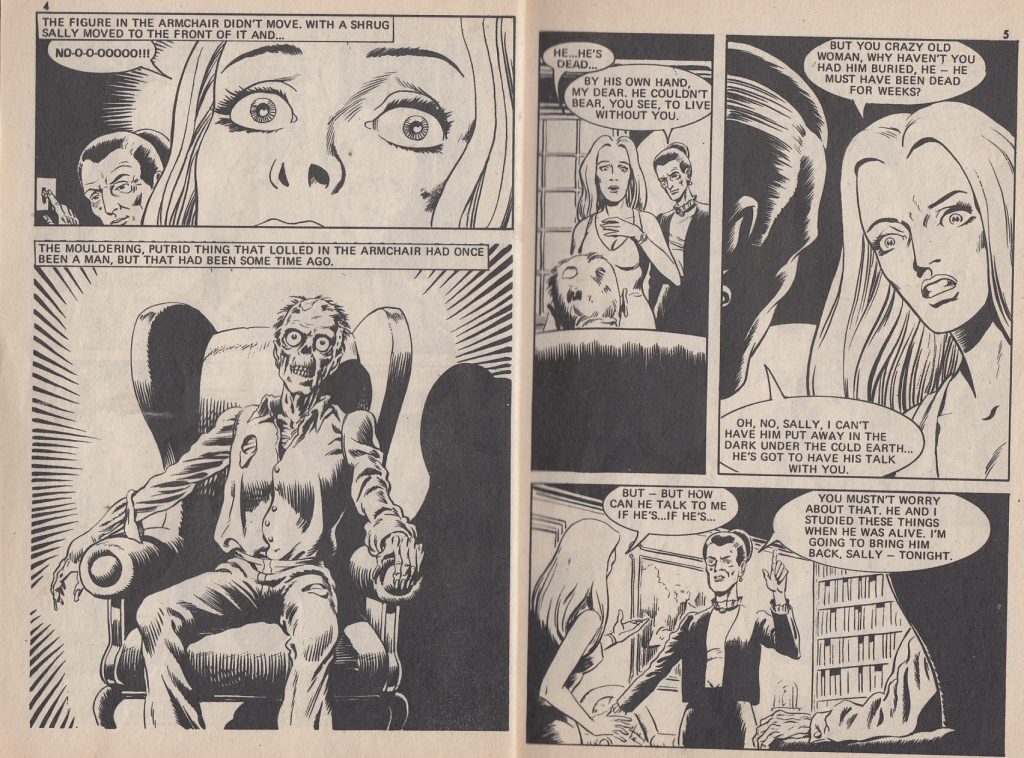
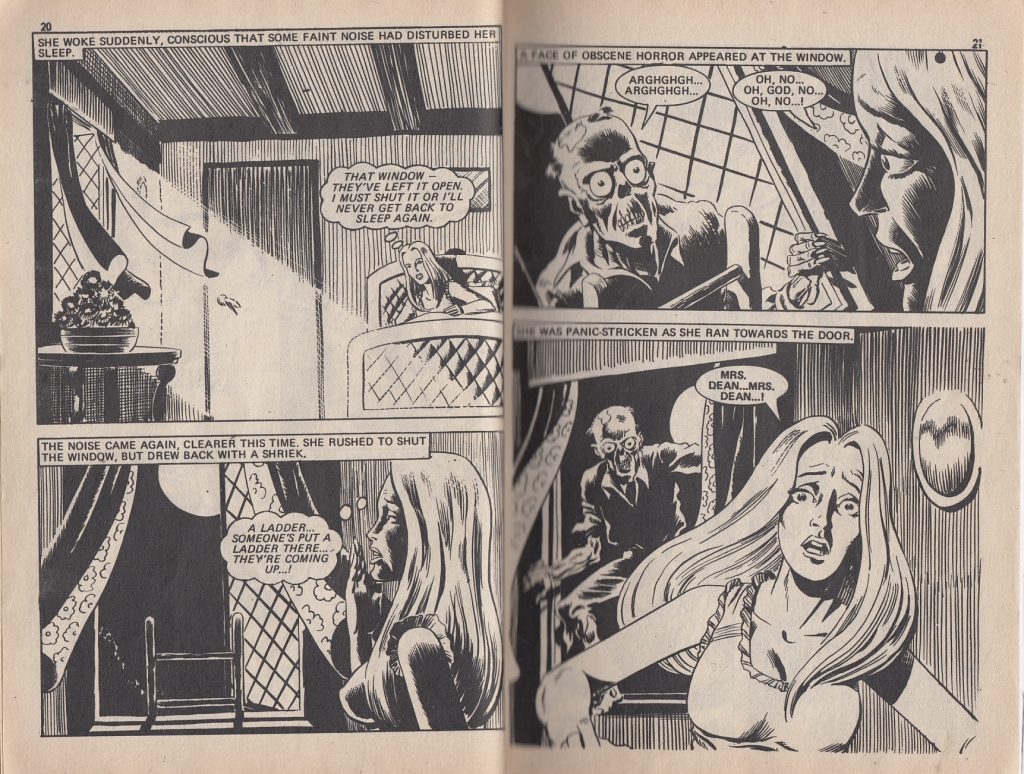
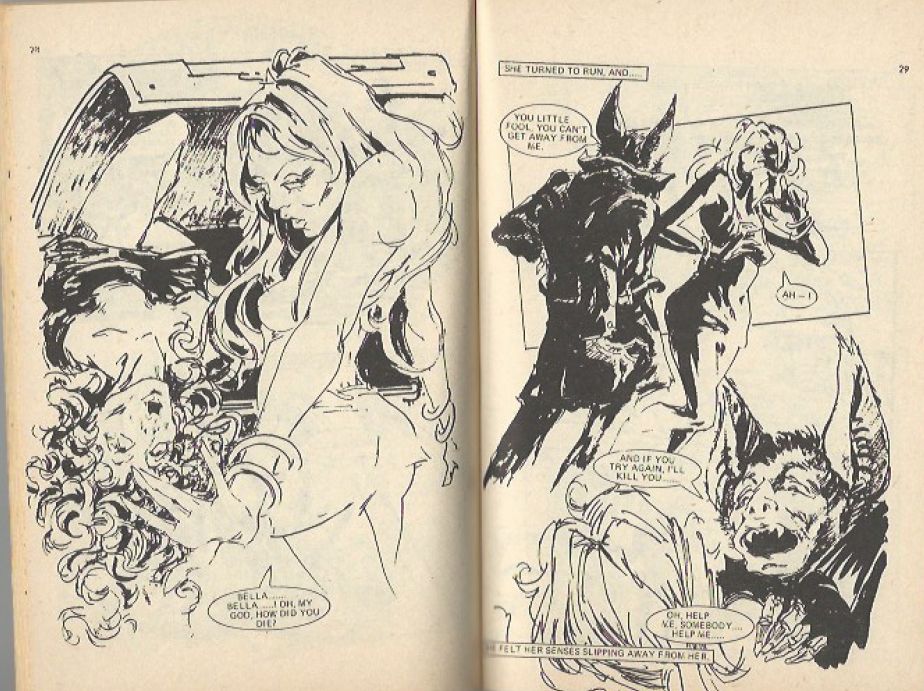
Writing on Facebook in 2022, Ian Gibson, then working on his own creator-owned strip, Lifeboat, revealed his work on Pocket Chiller Library was his first work in mainstream comics.
“Just over 50 years back, I’d just finished a year or so as stage roadie for Climax Blues Band’s tour of the UK and they wanted me to get a driving license so I could go on their US tour to help with the driving round America,” he related. “But my agent, who Steve Parkhouse had introduced me to, sent me a letter (no luxury of phones in those days. Not in a flat that only cost a fiver a week!) telling me he’d got me a gig doing a girl’s adventure strip in Mirabelle. So I wished the band farewell and drew the pages and mailed them off.
“A while later my agent sent me a letter saying the tube had arrived, but was empty! Some joker in the postal system had shaken the tube so violently that the roll of art burst through the paper tape and escaped! Not an auspicious start to a career in comics – lost in the mail! But like Lao Tzu says: ‘It furthers one to persevere.’ So, here I am some 50 years later with my Lifeboat characters …. ‘Lost in space’.”
When Ian’s Mirabelle pages finally reached the title’s editor, “when the pages did turn up, “the editor decided that my girls were too skinny and he didn’t like the fact that the ‘bad guy’ has his back to us when he first appears,” Ian revealed. “That’s why I ended up doing a bunch of pocket horror library books.” Those books being work for Pocket Chiller Library.
We’ve now separated out our Pocket Chiller Library checklist over three separate listings and we hope it brings back memories for some of you… chilling ones!
Follow the links below… if you dare…
John Freeman
• Pocket Chiller Library – Main Feature
• Checklists: Issues 1 – 49 | Issues 50 – 100 | Issues 101 – 137
Note that from Issue 86 onwards, the title went reprint
Additional information welcome! This feature and listing last updated 17th December 2021
For those of you trying to puzzle out the history of the many British pocket library titles and publishers, Steve Holland notes that just to add to the confusion, a lot of pocket libraries were packaged abroad and sold around Europe (France, Germany, Spain, etc.), so there is still a lot of questions about whether some pocket libraries were reprints – or were actually published here in the UK first!
WEB LINKS
• Grand Comics Database – Pocket Chiller Library Listing and Covers
• Nightmare Suspense Picture Library – Listing and Covers
With thanks to Dave Gibbons, Adrian Griffiths, Steve Holland, Rik Hoskin, Chris O’Leary, Douglas Noble, the much-missed Colin Noble, Steve Pini, David Roach, the indispensable Richard Sheaf, Dez Skinn and Jon Smit – and thanks also to the WordPictureWord Group for sending me down this rabbit hole!
The founder of downthetubes, which he established in 1998. John works as a comics and magazine editor, writer, and on promotional work for the Lakes International Comic Art Festival. He is currently editor of Star Trek Explorer, published by Titan – his third tour of duty on the title originally titled Star Trek Magazine.
Working in British comics publishing since the 1980s, his credits include editor of titles such as Doctor Who Magazine, Babylon 5 Magazine, and more. He also edited the comics anthology STRIP Magazine and edited several audio comics for ROK Comics. He has also edited several comic collections, including volumes of “Charley’s War” and “Dan Dare”.
He’s the writer of “Pilgrim: Secrets and Lies” for B7 Comics; “Crucible”, a creator-owned project with 2000AD artist Smuzz; and “Death Duty” and “Skow Dogs” with Dave Hailwood.
Categories: downthetubes Comics News, downthetubes News
 Rewriting Earth gets funding opportunity boost, German edition of The Most Important Comic Book in the World available now
Rewriting Earth gets funding opportunity boost, German edition of The Most Important Comic Book in the World available now  Quantum Leap! We go behind the scenes on Time Bomb Comics flagship anthology
Quantum Leap! We go behind the scenes on Time Bomb Comics flagship anthology  Portsmouth Comic Con announces 2024 Talent Search
Portsmouth Comic Con announces 2024 Talent Search  Exclusive: SF thriller “Pilgrim: Secrets and Lies” continues at B7 Comics
Exclusive: SF thriller “Pilgrim: Secrets and Lies” continues at B7 Comics
It should also be noted that the same story could appear in different issues under different titles.
#28: The Hunchback and #87: Gibbet of the Damned for instance are the same story.
Thanks for this, useful to know
I’ve been chatting with Paw Broon over at Comic Book + about the source of some of this art. He sent me several Pocket Chillers and I recognized Enrique Nieto, who drew a lot of stories for Charlton Comics (USA) in the 1970s. Nieto was one of the members of an Argentinian shop, the Union Studio.
This sent me on a Google journey through Spanish language comic sites looking for background on Union Studio. Oddly it was difficult to find much information. I say “oddly” because the shop supplied tons of art for European and American publishers. Its story demonstrates the convoluted world of international comics of the 60s and 70s.
Union Studio was established by Julio Cesar “Chiche” Medrano, a respected and prolific artist known for publishing under countless pseudonyms. Medrano drew mostly war stories, and contributed to Fleetway for several years. Union Studio artists I’ve found named are Enrique Nieto, Jose Luis Garcia Lopez, Oscar Fraga, Quique Alcatena, Walter Taborda, Pedrazzini, Eduardo Risso, Antonio Reynoso, Walter Casadei, Cirilio Munoz, Oscar Novelle, and Jose Massaroli. The “Martinez” who drew some Charlton stories was apparently Medrano himself.
The studio seems to have worked for British, German, Italian, and American publishers as well as Argentine magazines. Foreign clients included DC Thomson, Colomba, Record, Charlton, Gold Key, DC comics, and Universo (Italy). One odd sideline was supplying new art for a notorious American line of ultra-violent b&w horror comics published by Myron Fass’ Eerie Publications. These books presented stories pirated from second-banana 1950s horror comics, newly redrawn to maximize the gore. The Studio’s American contact (there may have been more than one) was Argentine artist Arnoldo “Francho” Franchioni. Francho also drew for Fass’ infamous “Captain Marvel” comics.
Passing into speculation, it seems possible that the studio’s Pocket Chiller Library material might have been commissioned directly by the British publisher. Alternatively they might have been reprints of Italian mags of the “Oltretomba” variety. However the only Italian publisher named in the articles I found was Universo, which published adventure and sport comics but not horror. There were dozens of 1970s Italian horror titles, though. It’s quite possible Union Studio drew stories which later found their way to England.
Sorry for wandering off and on to topic, but I wanted to get what little I know out there and invite anyone with knowledge of Union Studio to join in. It could help illuminate the Pocket Chiller pedigree.
Wow, thanks very much for all this information and suggestions! Very welcome.